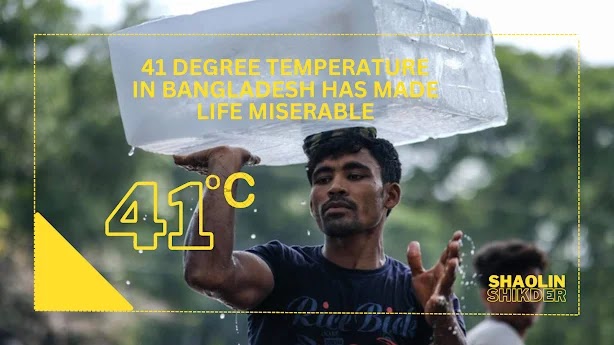This journal aims to shed light on the pressing environmental issues that Bangladesh faces in the present day. With a focus on sustainability, we delve into various aspects such as air and water pollution, deforestation, climate change, waste management, and biodiversity loss. Through an extensive analysis of the current state of the environment, the causes and consequences of these issues, as well as the ongoing efforts and potential solutions, this journal serves as a comprehensive resource to raise awareness and foster action towards a more sustainable future for Bangladesh.
Introduction:
Bangladesh, a densely populated country in South Asia, boasts a rich natural heritage with diverse ecosystems. However, rapid urbanization, industrialization, and population growth have placed immense pressure on its environment, leading to a myriad of environmental challenges. This journal aims to delve into the present-day environmental issues in Bangladesh, exploring their causes, impacts, and potential solutions.
1.Air
Pollution:
The first section focuses on air pollution, a growing concern in major cities and industrial areas of Bangladesh. It examines the sources of air pollution, including vehicular emissions, industrial activities, and brick kilns, and discusses the health risks and environmental consequences associated with poor air quality. Furthermore, this section explores the initiatives taken by the government and civil society to mitigate air pollution and promote cleaner technologies.
2.Water
Pollution:
The second section delves into the issue of water pollution, particularly the contamination of rivers, lakes, and groundwater sources. It analyzes the causes of water pollution, such as industrial effluents, improper waste disposal, and agricultural runoff. The impacts on human health, ecosystems, and the economy are discussed, along with the efforts to improve water quality through policy measures, infrastructure development, and community involvement.
3.Deforestation
and Land Degradation:
This section examines the alarming rate of deforestation and land degradation in Bangladesh. It explores the drivers of deforestation, including illegal logging, agricultural expansion, and urbanization, and the consequences for biodiversity, climate regulation, and local communities. The journal also highlights reforestation initiatives, sustainable land management practices, and the role of education and awareness in combating deforestation.
4.Climate
Change:
Climate change poses significant challenges to Bangladesh, making it vulnerable to rising sea levels, extreme weather events, and changing rainfall patterns. This section explores the impacts of climate change on agriculture, coastal communities, and ecosystems. It examines adaptation and mitigation strategies implemented at the national and community levels, including climate-resilient infrastructure, early warning systems, and renewable energy initiatives.
5.Waste
Management:
The fifth section delves into the issue of waste management, focusing on solid waste and plastic pollution. It analyzes the challenges associated with waste generation, collection, and disposal, as well as the environmental and health risks posed by improper waste management practices. The journal examines waste reduction strategies, recycling initiatives, and the importance of public participation in waste management.
6.Biodiversity
Loss:
The final section explores the loss of biodiversity in Bangladesh, highlighting the threats faced by endangered species, ecosystems, and protected areas. It discusses the causes of biodiversity loss, including habitat destruction, illegal wildlife trade, and pollution. The journal emphasizes the need for conservation efforts, community engagement, and sustainable development practices to protect biodiversity and restore ecosystems.
Conclusion:
In conclusion, this journal sheds light on the present-day environmental issues in Bangladesh, emphasizing the need for urgent action to achieve sustainability. It provides a comprehensive understanding of the causes, impacts, and potential solutions to air and water pollution, deforestation, climate change, waste management, and biodiversity loss. By raising awareness and fostering collaboration among stakeholders, we can strive towards a greener, cleaner, and more sustainable Bangladesh for future generations.







